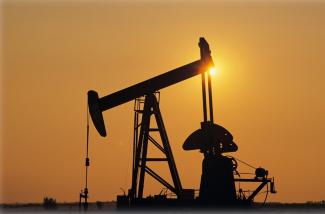The National Energy Technology Laboratory (NETL), led by DOE’s Office of Fossil Energy and Carbon Management, announces the release of detailed report that presents key guidelines for measuring methane emissions from marginally producing oil and natural gas wells. The guidelines were developed to assist the 14 states awarded funding under Funding Opportunity DE-FOA-0003109.This report was made possible through a partnership between NETL and U.S. Environmental Protection Agency (EPA).
The guidelines describe procedures for the grant recipients to adequately measure and monitor methane emissions prior to and following the voluntary plugging and abandonment of low-producing conventional wells, also known as marginal conventional wells.
In addition to administering the projects awarded under the program, NETL (through its Research and Innovation Center) will provide technical assistance to the awarded projects. To support the awarded projects, NETL is providing the methane measurement guidelines to be used in measurements required both before and after the voluntary plugging of wells under projects within the program. The guidelines will provide information and direction on methane measurement approaches and technologies to aid those taking measurements under the program to effectively measure methane emissions from marginal conventional wells (MCWs) — wells that produce less than 15 barrels of oil, or, less than 90,000 cubic feet of natural gas per day. The guidelines specify minimum requirements and recommended protocols for collecting data about methane emissions from those wells.
NETL’s Natalie Pekney, Ph.D., explained that it is important to address methane emissions from MCWs because methane is a potent greenhouse gas and unaddressed, the wells can emit methane and other harmful air pollutants into the atmosphere and/or leach into surrounding soils and waters creating health and safety hazards that prevent lands from being used for recreation or other productive purposes.
“There are an estimated 600,000 MCWs in the U.S.,” Pekney explained. “MCWs comprise about two-thirds of all active oil and gas wells in the country. MCWs are concentrated in Appalachia, the Midwest, the Gulf Coast, the Rocky Mountains, and California — regions that have a long and rich history of conventional oil and gas development.”
She added that work to detect and measure methane emissions can also help provide preliminary assessments to prioritize activities toward higher methane emitting wells.
In addition to guidance for methane emissions measurements, the report includes recommendations for optional time-saving screening techniques that categorize wells as:
- No emissions detected, no further investigation.
- Emitting at a low or moderate level and more comprehensive emission measurement may or may not be required.
- High emitters that require a more comprehensive emission rate measurement.
- High priority for voluntary plugging for other reasons and more comprehensive emission measurement may or may not be required.
NETL is a DOE national laboratory that drives innovation and delivers technological solutions for an environmentally sustainable and prosperous energy future. By using its world-class talent and research facilities, NETL is ensuring affordable, abundant, and reliable energy that drives a robust economy and national security, while developing technologies to manage carbon across the full life cycle, enabling environmental sustainability for all Americans.




